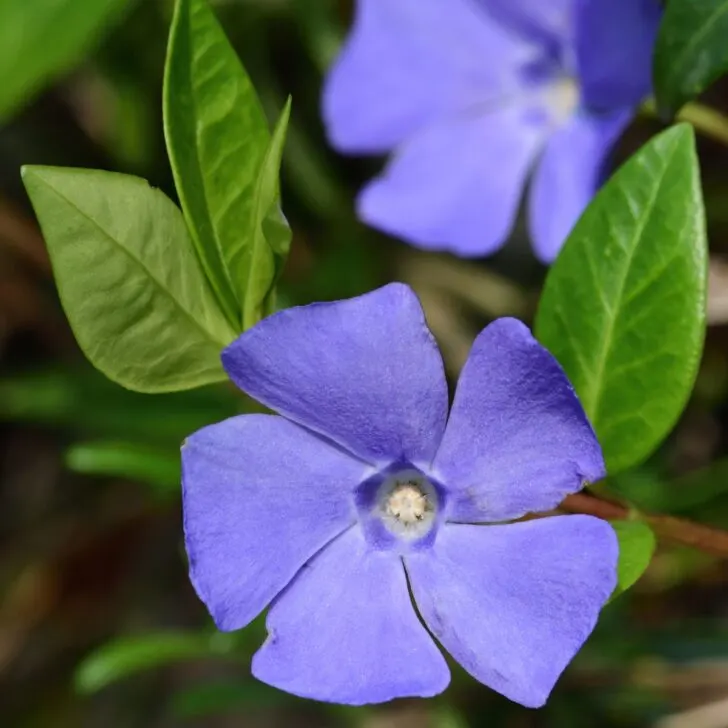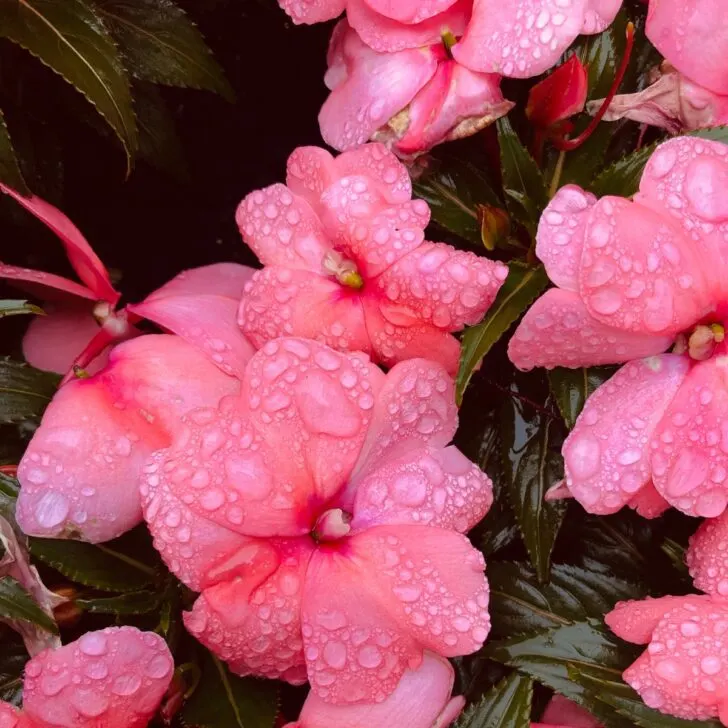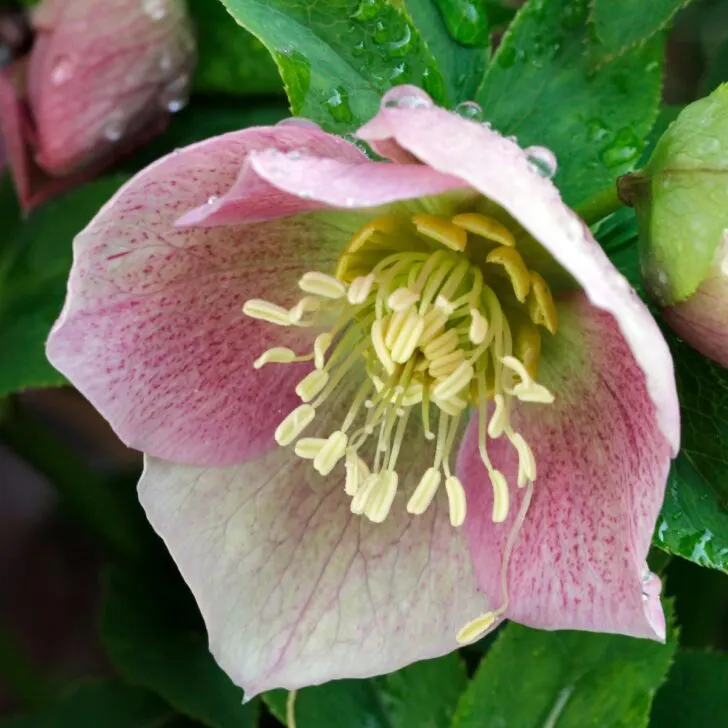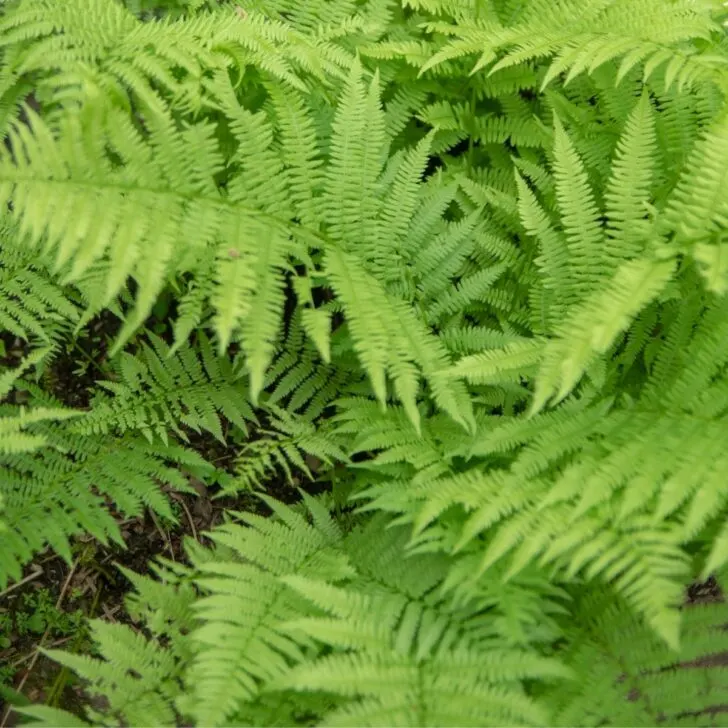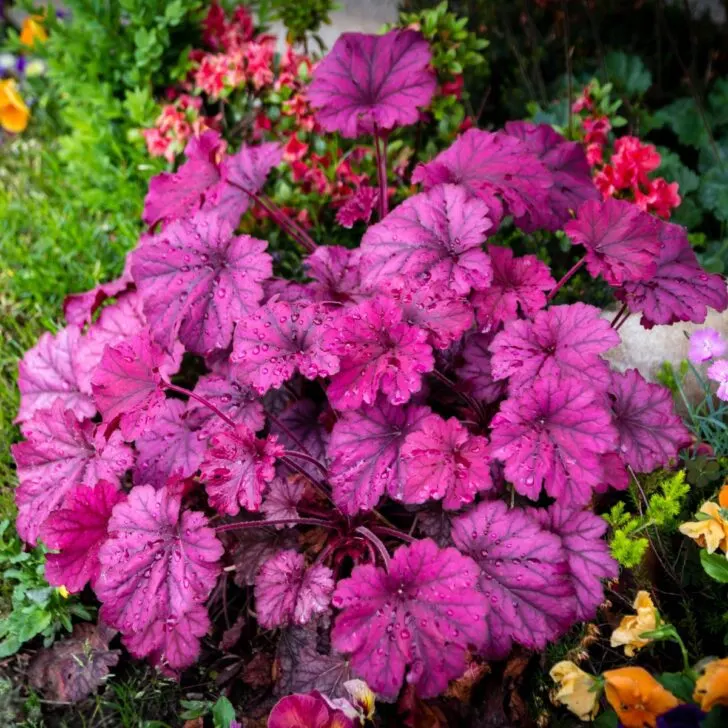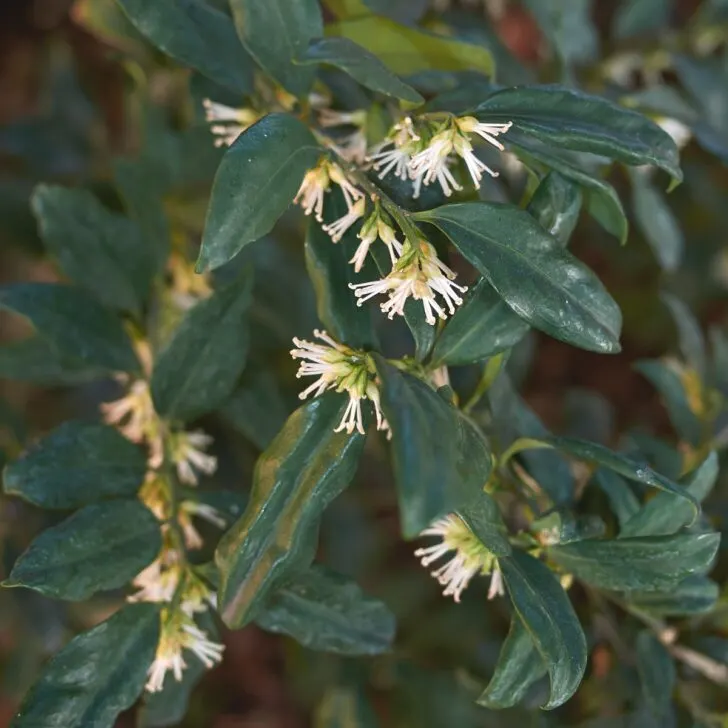Brunnera is a stunning foliage plant with tiny blue spring flowers that thrives in shady spots. Here's how to grow Brunnera in your garden!
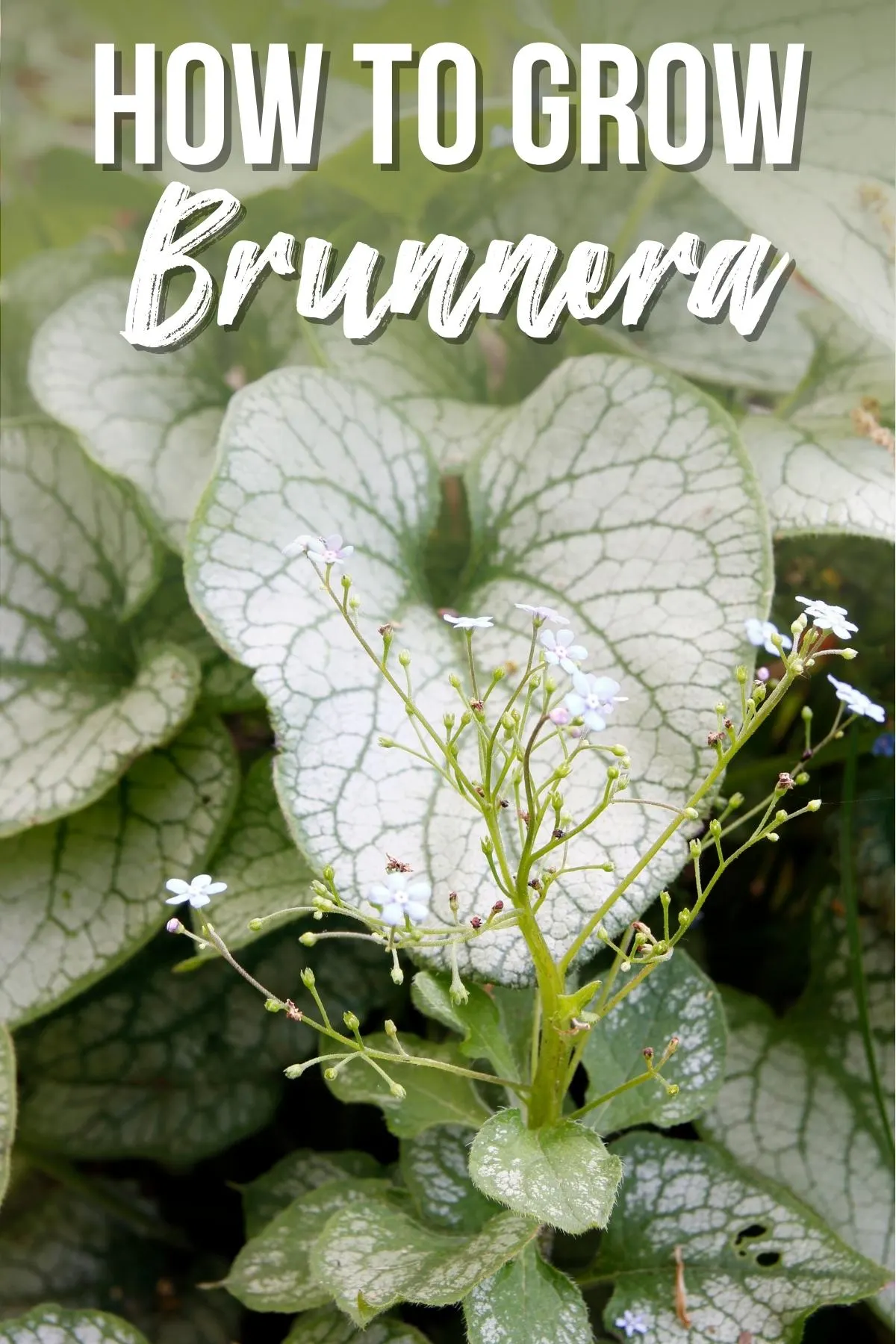
Brunnera, also known as Siberian bugloss or Brunnera macrophylla, is a stunning plant with glossy and often frosty-looking foliage that thrives in shady gardens. The large, heart-shaped, slightly hairy leaves have dark green veins, and many variegated types have leaf edges with crinkly silver, grey, or white patterns on top.
This perennial plant forms 18-inch high mounds and slowly spreads through rhizomes to colonize new areas, making it a lovely and non-invasive ground cover.
In spring, masses of delightful, tiny blue flowers resembling forget-me-nots sprout up for several weeks, supported on thin stems. Due to the flowers' resemblance to forget-me-nots, brunnera is also called false forget-me-not.
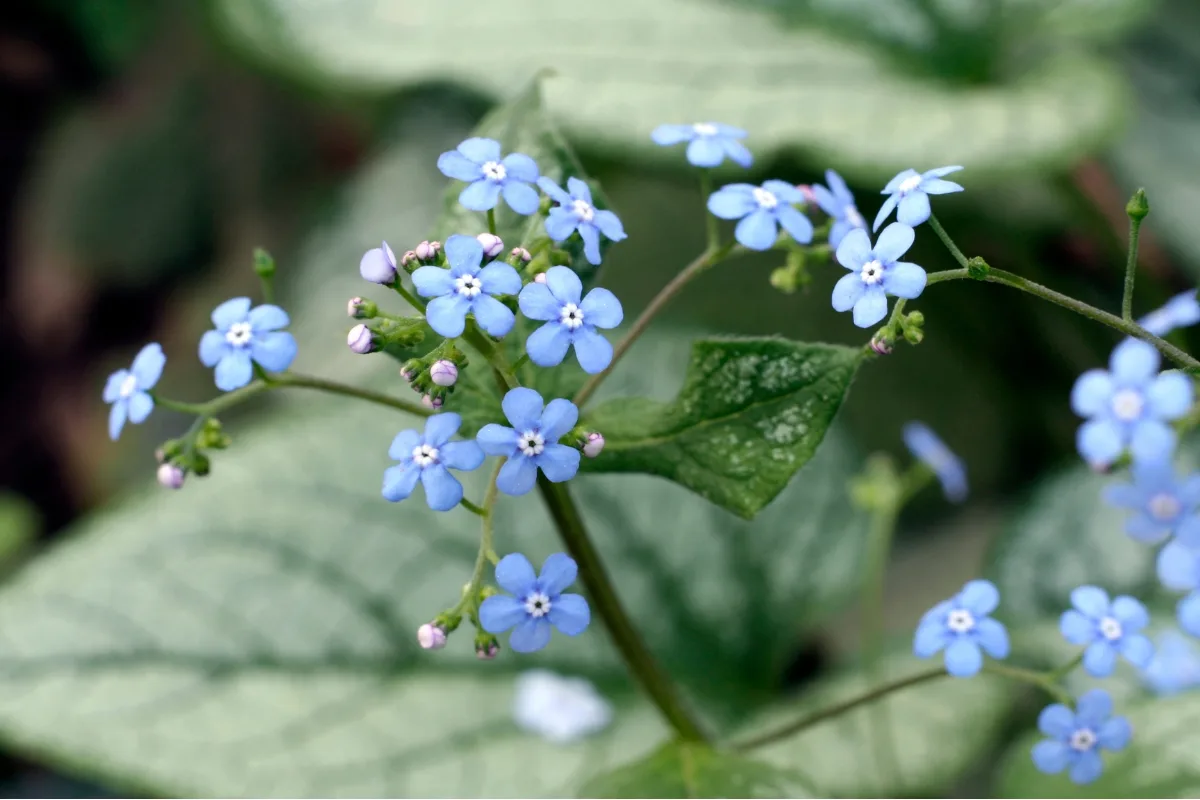
Here's how to grow and care for brunnera in your garden!
This post contains affiliate links for your convenience. Purchases made through these links may earn me a small commission at no additional cost to you.
Brunnera Varieties
Popular varieties of brunnera include:
- 'Emerald Mist' with a silver lining around the leaf margins and on the leaf surface
- 'Jack Frost' has large dark green leaves with a distinctive, silvery pattern
- 'Diane's Gold' has leaves with a golden hue
- 'Langtrees' is a variety with mottled spots of white at leaf margins
- 'Sterling Silver' has foliage with an incredibly frosty look.
Keep in mind that some cultivars are patented, and it is prohibited to propagate them without permission. The 'Jack Frost' cultivar is among these, and this type does not grow out true when started from seed, so you need to buy plants or rhizomes from a nursery or online.
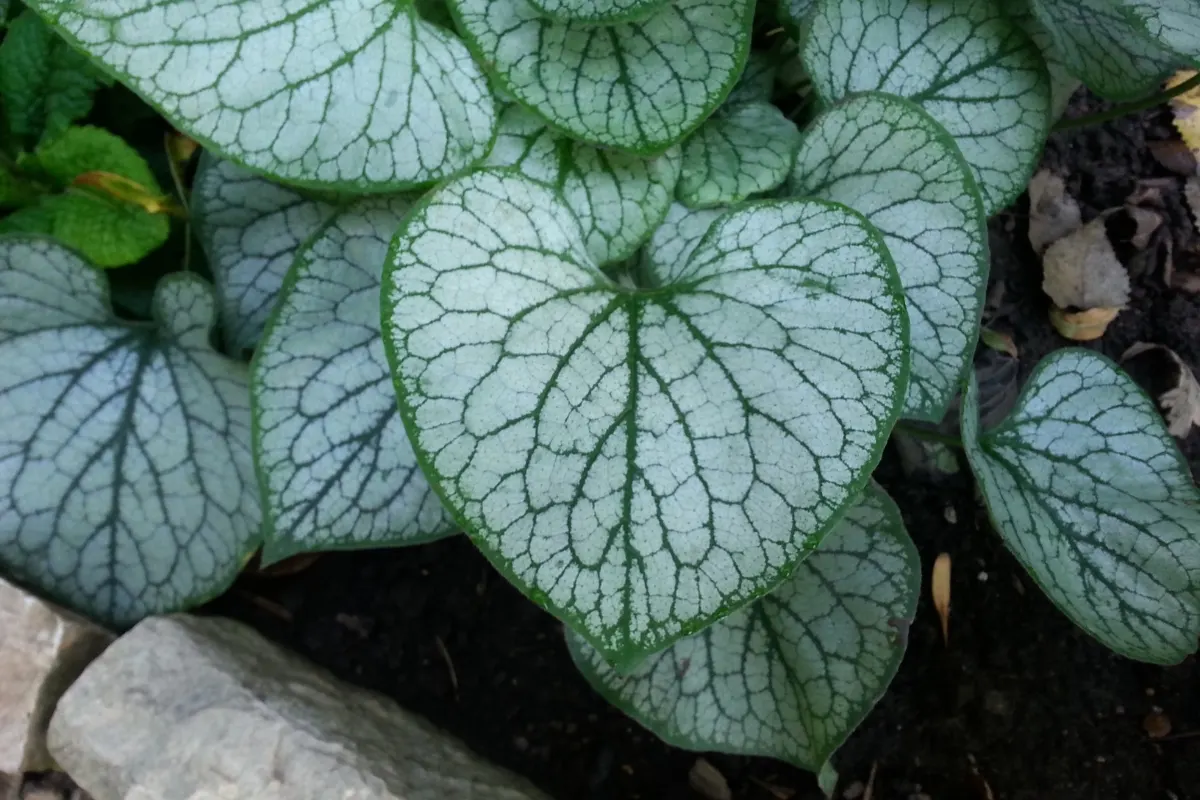
Plant breeders are continually developing new cultivars of brunnera with exciting leaf patterns and colors, so watch for the latest creations!
When to Plant Brunnera
You can plant brunnera anytime from mid-fall through the early spring when the ground is not frozen.
Where to Plant Brunnera
Brunnera needs shady, continually moist, well-draining soil with a pH of 5.5 to 7, but it can tolerate clay soil with some added compost or other organic matter. Non-variegated types can tolerate more sun exposure than variegated cultivars, but dappled morning and late afternoon sun or full shade are optimum for most.
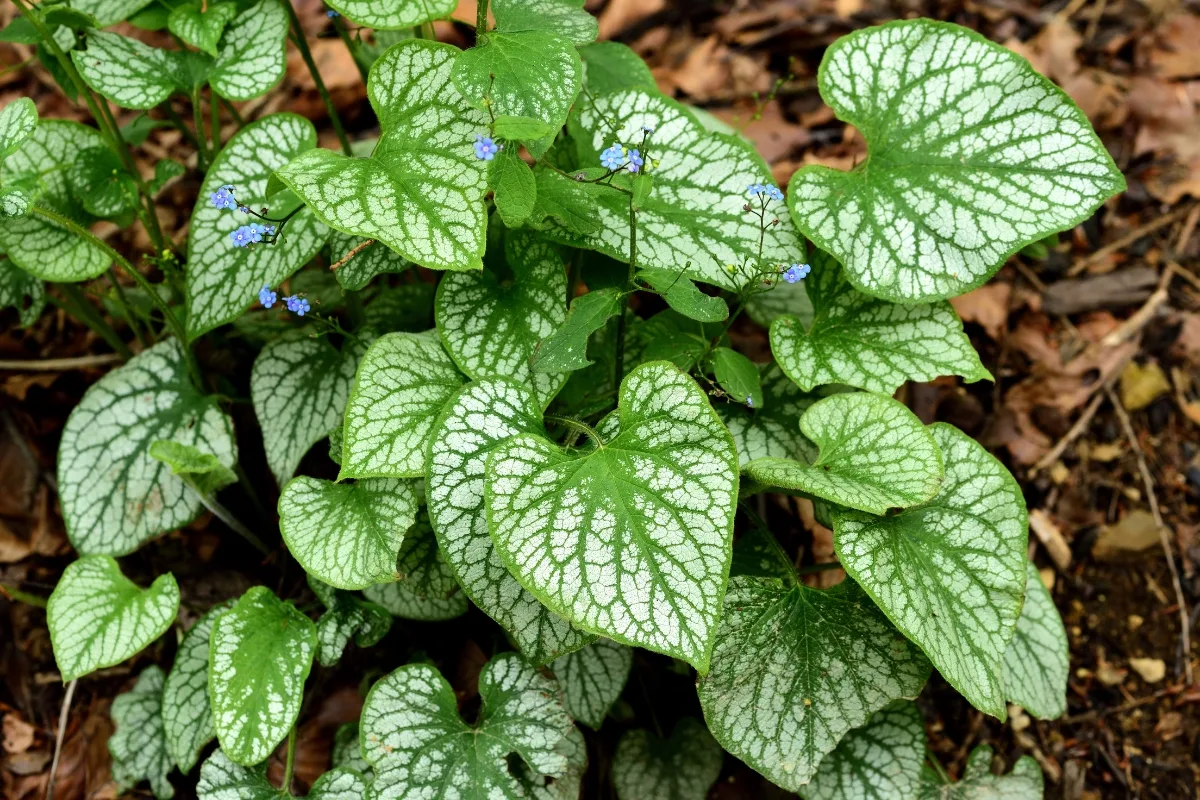
The 'Jack Frost' cultivar tolerates sunny conditions better than other variegated types, but if you want to plant this species in a sunny location, consider a non-variegated cultivar. The hot afternoon sun is especially damaging for variegated types of brunnera.
You can plant brunnera as an eye-catching specimen or in large groups for groundcover or texture in shady garden borders, along pathways, or under trees and shrubs with other shade-loving plants. It thrives near streams and ponds and contrasts nicely with other woodland plants like heucheras and bleeding hearts.
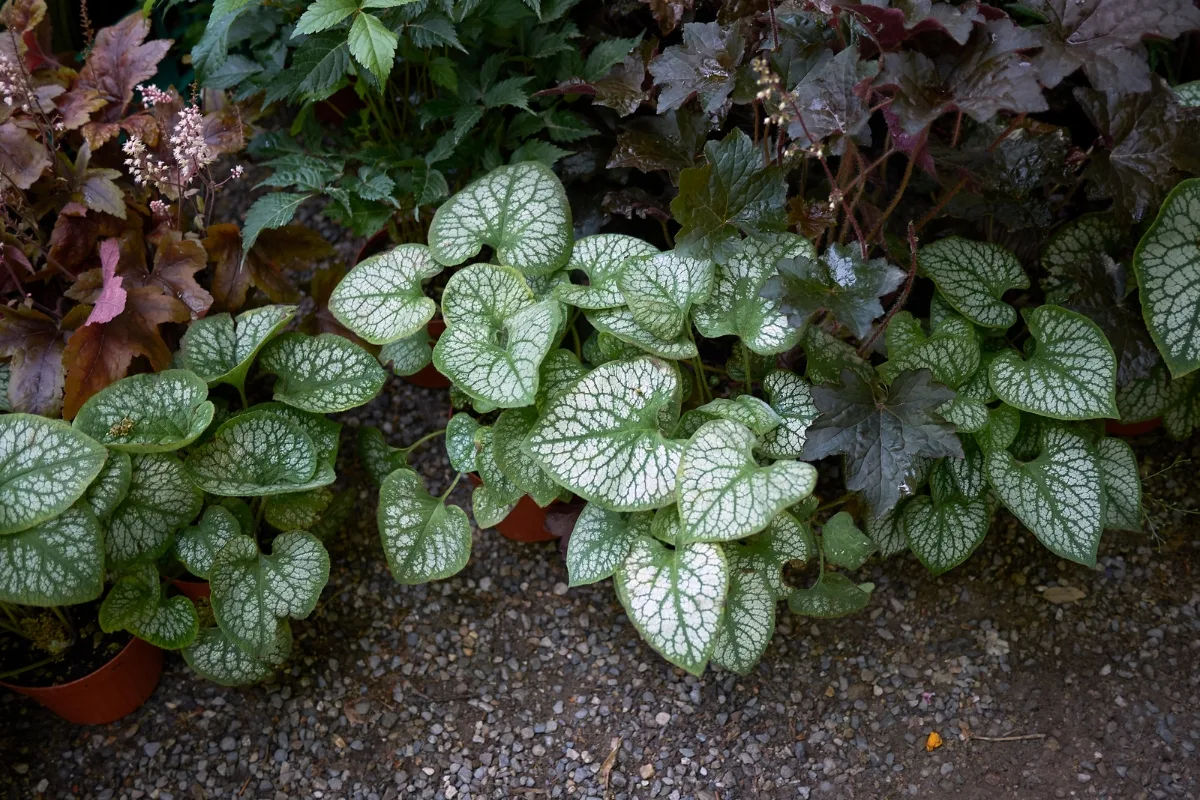
Also, consider planting brunnera near spring blooming bulbs like daffodils for an early season display of striking flowers and foliage. Neither deer nor rabbits eat brunnera, so it's safe to plant in woodland gardens and naturalized areas.
Brunnera also grows in containers as a houseplant but keep it in a location with indirect light. It does not like dry air, so if you grow it indoors, keep it misted or put it in a room with higher humidity.
How to Plant Brunnera
Brunnera plants often sprout up from seeds dropped by established plants the previous season. You can dig up these seedlings and move them to new locations. But remember that patented types usually do not grow up to look like the parent plant. It's also easy to propagate this plant by dividing rhizomes in winter.
If you are planting in groups, space plants one to two feet apart. They will slowly spread and fill the area for a beautiful and practical ground cover.
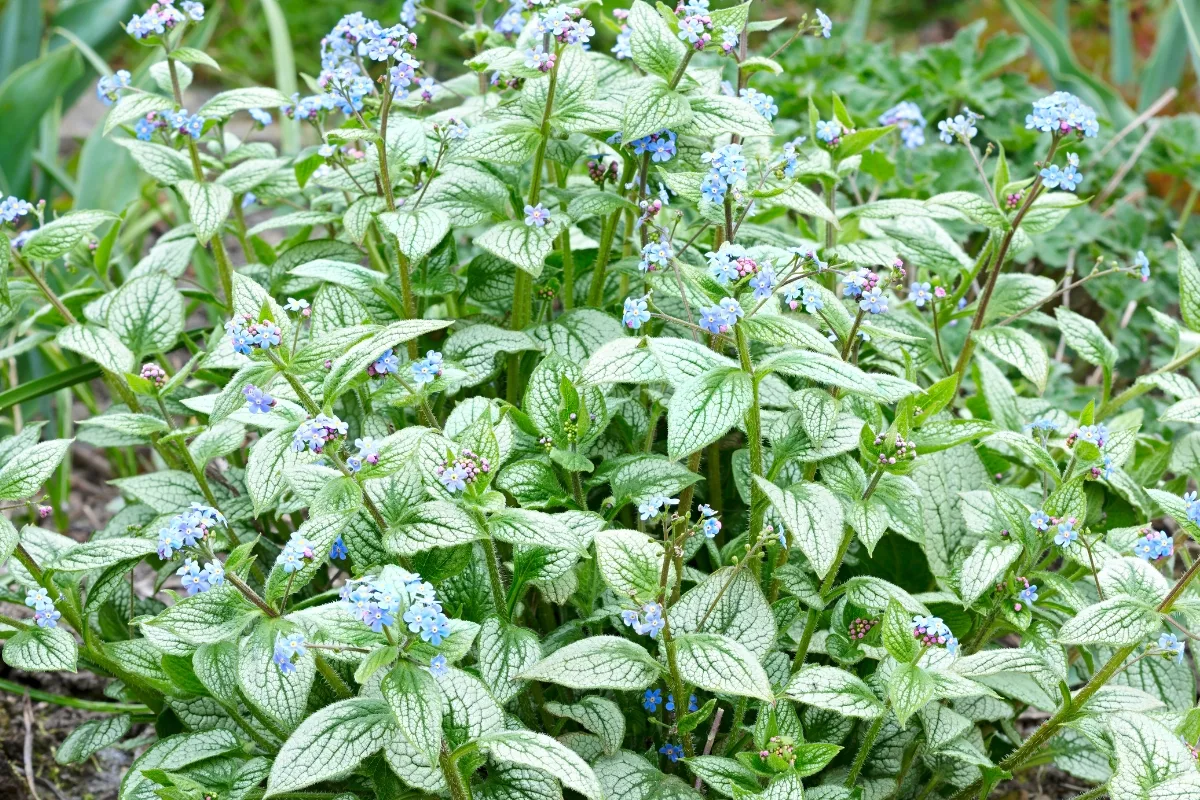
Brunnera grows best in fertile soil. So, if the ground is deficient in organic matter, dig a large hole and mix in some good-quality compost, leaf mold, or aged manure. These materials can also improve drainage conditions, and brunnera does not like soggy roots.
How to Care for Brunnera
Brunnera is a low-maintenance plant, and once established, the only care it needs is keeping the soil moist but not soggy. In addition, an occasional application of mulch around the base of the plants helps retain soil moisture and provides slow-release nutrients.

If the plants look raggedy after flowering, or you don't want them to re-seed, you can cut off the flower stalks. However, deadheading is not necessary.
It's also safe to cut back damaged leaves in summer to improve the plant's appearance. Spring is also an excellent time to cut off old foliage and invigorate growth, but it's best to leave some faded leaves in place over the winter to cover and protect the roots.
Frequently Asked Questions about Brunnera
No, you should leave the foliage on the plant to protect the crown and roots over the cold winter months. Cut back the faded leaves in spring when the plant starts pushing new growth, or during the summer.
Yes, brunnera is deer resistant. For this reason, it is commonly planted along woodland borders as an alternative to hostas.
Yes, brunnera is a perennial that will come back year after year.

